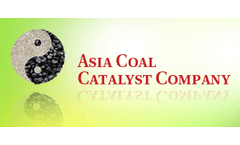Show results for
Refine by
Gas Desulfurization Articles & Analysis
20 articles found
Entrusted by the company, shandong baolan environmental protection engineering co., ltd. for its preparation of the preliminary design scheme of dust removal and desulfurization treatment. In line with the design principle of mature and reliable technology, reasonable overall layout, convenient operation and management, and low processing cost, we compiled the ...
Desulfurization with a combination of techniques In the gas desulfurization sector, as can be seen, there are numerous techniques, but there are two that predominate in the market when large flows are treated at high concentrations of H2 S. ...
The main application fields cover leachate treatment, difficult wastewater treatment, flue gas desulfurization and coal chemical wastewater ZLD. ...
On site biogas production Biogas can be produced from various organic resources of which the most common are agricultural waste, municipal waste, landfills, and wastewater treatment facilities. But biogas upgrading is also very much applicable in the (food & beverage) industry. Through biogas upgrading, trace impurities and carbon dioxide (CO2) in raw biogas are separated from methane (CH4) ...
These systems combine the benefits of direct heating systems (open fire) having an indirect home heating system (wind), and together these systems improve how heat is commonly used while saving energy. Residual Gas Use The combustible gas that may be generated through the process of pyrolysis, is collected and after that undergoes an operation of de-dusting and ...
Industries: agriculture, WTTP, Dairy, (food & Beverage) Industry, Waste, Oil & Gas Summary: Biogas upgrading projects are typically projects that involve multiple parties, partners and suppliers and an equal number of contracts. At DMT we thought we could do that differently. What is we can unburden the customer, make the process more efficient and save the customer time and money? Total ...
Desalinated water supply helps plant meet strict environmental regulations Background STX Heavy Industries, a Korean EPC, recently implemented flue-gas desulfurization (FGD) at a coal-based power plant in Chile in order to comply with the country’s strict environmental regulations. ...
Along with bottom ash (BA) and flue gas desulfurization gypsum (FGD gypsum, or synthetic gypsum), fly ash is a coal combustion residual (CCRs) – a byproduct of coal-generated power and one of the largest streams of industrial waste in the US. ...
A biotrickling filter (BTF) was used to investigate the elimination of flue gas adsorbent containing sulfite, sulfate, and hydrosulfate; it was undertaken to replace the regeneration step of dual-alkali flue gas desulfurization. Sulfate-reducing bacteria (SRB) isolated from landfill leachate were inoculated, and overall ...
Many coal‐fired electric generating facilities in the US are discharging higher loads of Hg, Se, and other chemicals to receiving streams due to the installation of flue gas desulfurization (FGD) air pollution control units. There are regulatory concerns about the potential increased uptake of these bioaccumulative trace elements into food webs. ...
ABSTRACT Measuring campaigns at two Danish pulverised coal fired power plants has been performed. The power plants are equipped with the same type og flue gas cleaning devices. The concentrations and chemical compositions of the formed particles were similar for the two plants. The measurements were performed simultaneously at three locations including both total dust measurements and fine ...
Overall, the Clean Water Act proposed rule was revised to include eight potential regulatory options, instead of the five in the proposal sent from EPA to the White House Office of Management and Budget in January for oil, natural gas, coal, and nuclear power plants that generate more than 50 megawatts of power. ...
Substrate: Animal manure and food waste Biogas flow: 3.600 Nm3/h H2S Inlet: 3.000 ppm H2S Outlet: 80 ppm Year of installation: 2012 The Maabjerg plant is a collaboration between agriculture, municipalities and the district heat station and is situated in the northern part of Denmark. When in full operation, it will transform up to 650.000 tons of biomass based mainly on manure and food waste ...
The Facility Illinois’ City of Springfield’s Dallman Power Station’s three coal-fired units and soon to be installed fourth unit, are equipped with flue gas desulfurization (FGD) systems (scrubbers) to control sulfur dioxide (SO2) emissions. ...
China made a “huge” move to convert it’s developing nation to a world leading economy. The “huge” move made was bringing electricity to the 100% of it’s 1.3 billion people. Now consumerism is taking hold of China’s 1.3 billion inhabitants. 1.3 people are buying rice cookers, refrigerators, TVs and Computers. China’s energy needs are at an all time ...
The LO-CAT® II process provides cost effective H2S removal for all types of gas streams in many different industries. The LO-CAT and LO-CAT II processes have achieved H2S removal efficiencies of 99.9+% in many different applications and industries. These applications include natural gas production, oil refining, biogas, landfill gas, coke oven gas, geothermal steam power production, CO2 ...
Coal consumption accounts for about two thirds of the primary energy consumption in China. High economic growth has brought about a rapid increase of coal consumption. Low-efficiency combustion of a large amount of coal caused coal-smoke related air pollution. The Chinese government put forward plans to develop clean coal technology in the early 1990s, and has listed it as one of the emphases for ...
This paper examines past experience in controlling emissions of sulphur dioxide (SO2) and nitrogen oxides (NOx) from coal-fired electric power plants. In particular, we focus on US and worldwide experience with two major environmental control technologies: flue gas desulphurisation (FGD) systems for SO2 control and selective catalytic reduction (SCR) systems for NOx control. We quantitatively ...
Particulate matter smaller than 2.5 mm in aerodynamic diametre (PM2.5) from coal-fired boilers is composed of directly emitted (primary) particles and particles formed from precursors (secondary particles). Technologies to reduce emissions of precursors to secondary PM2.5 emitted by coal-fired utility plants include wet and dry flue gas desulphurisation (FGD). Limestone forced oxidation (LSFO) ...
ABB's seawater scrubbing process (the Flakt-Hydro process) for flue gas desulfurisation has recently triggered much interest among power producers because of its simple operating principle and high reliability. The process uses seawater to absorb and neutralise sulfur dioxide in flue gases. The absorbed gas is oxidised and returned to the ocean in the form it originated in the first place, namely ...
















